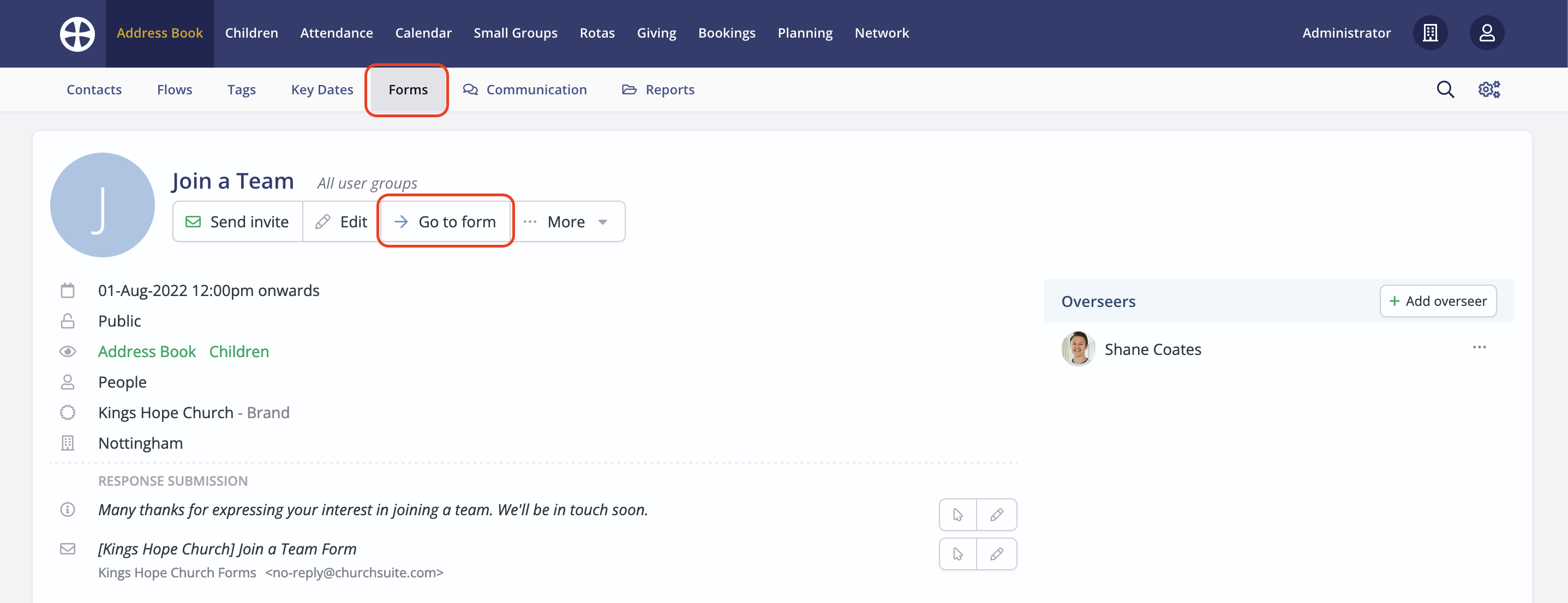Sharing published forms
In this article
Accessing a Form Page URL
Embedding a form on a website
Sharing a QR code
Having built the perfect form, you'll now want to share the form and begin collecting responses. Depending on the form's settings - public, private, or anonymous - and the intended audience, you can easily share forms in a variety of ways:
- By using the Send Invite workflow to share any form with specific recipients who already exist in your Address Book or Children module in ChurchSuite. This method has distinct advantages, enabling you can track each invitee's response status, and providing invitees with a great user experience with the details pre-populated in their response (where smart-linked fields have been used). See the related support article on Sending form invitations
- By sharing the Form Page URL for public forms - perhaps on WhatsApp, social media pages, or in your email communications. A form page URL cannot be shared for private or anonymous forms - responses are only permitted by people who have been sent a form invitation
- By embedding a form or a Form Page link on a page on your website
- By sharing the form's unique QR code in your communications
Accessing a Form Page URL
From a published Public Form "View", click Go to form.

The Form Page opens in your browser. Copy the URL from your browser. This is the public-facing URL that can now be pasted and shared in your various communication channels - social media, email, and website links.

Embedding a form on a page on your website
Following on from the previous section about form page URLs, you can easily embed a form on a page on your website by adding ?iframe=true to the end of the Form Page URL e.g. https://demo.churchsuite.com/forms/oqg2zvti?iframe=true
Then, working within the Source code or Embed block section of a page on your website, add this extended URL wrapped in iFrame brackets. Here's an example of the HTML for the iFrame...
<iframe src="https://demo.churchsuite.com/forms/oqg2zvti?iframe=true" style="width: 100%; height: 600px; border: 0" scrolling="yes"></iframe><br>
..which embeds the form without the usual Form Page header and footer section, like this.

If you choose to embed forms on your website in this way - rather than embedding a Form Page link - you may wish to consider adding a Heading element to the top of your form to give it a title, as the form Name is not shown when embedded within an iFrame.

Note also that when a respondent clicks Submit, the Success message is shown within the iframe, rather than being redirected to a 'success' page.
Sharing a QR code
A great way to share your new form is to use the unique QR code available from the More menu:

All you need to do is copy the image or save it to your own device - right-click on the image to access the options:

Once generated, you can add the QR code to your email communications, your printed flyers or even the weekly notice slides at the beginning of your services. Anyone with a smartphone can then scan the image to immediately access, and complete, your form.
